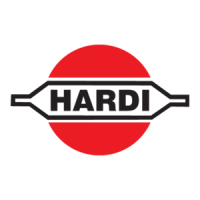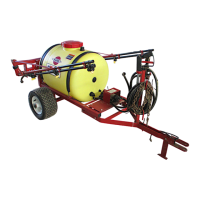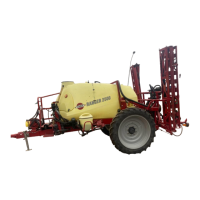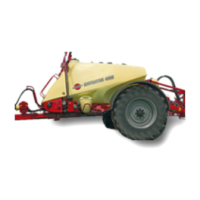49HARDI
®
N-SERIES 3-PT SPRAYER DIAPHRAGM OPERATOR'S MANUAL
Calibration (continued)
4. Divide the total nozzle capacity by 2 (the number of nozzles) to get
the GPM needed per nozzle to match the speed, pressure and width
used in the calculations (Example: 11.3 ÷ 2 = 5.65 GPM).
Capacity of single nozzle in GPM =
Total GPM
Number of nozzles
5. For HARDI
®
Giant End Nozzles, use the nozzle chart (Fig. 25) to
fi nd the nozzle with the closest desired output and pressure. (The G-
1200 White nozzle at 50 PSI is the closest for this example at 5.948
GPM).
IMPORTANT: Al ways check actual sprayed width at operating
pressure once the correct nozzle has been chosen. Locate the
sprayer in a suitable location and use clean water to check.
6. If the measured sprayed width at operating pressure differs from the
value used in step 2, re-calculate the total nozzle capacity using the
measured sprayed width. Divide by 2 to get the nozzle capacity in
GPM needed per nozzle (step 4). This will be the corrected nozzle
capacity in GPM required from each nozzle for proper application
rate.
7. Double-check the nozzle output with a measuring jug (using clean
water at operating pressure). If the measured nozzle output matches
the required calculated output, calibration is complete.
8. If necessary, use the following formulas to adjust either the spraying
speed or operating pressure to achieve proper calibration.
New speed (MPH) =
Desired output (GPM) x Previous speed (MPH)
Measured output (GPM)
New pressure (PSI) =
Desired output (GPM) x Previous pressure (PSI)
Measured output (GPM)
Note: If the operating pressure is changed, the actual spraying width
will need to be checked again. If spraying width differs, repeat
steps 6-8.

